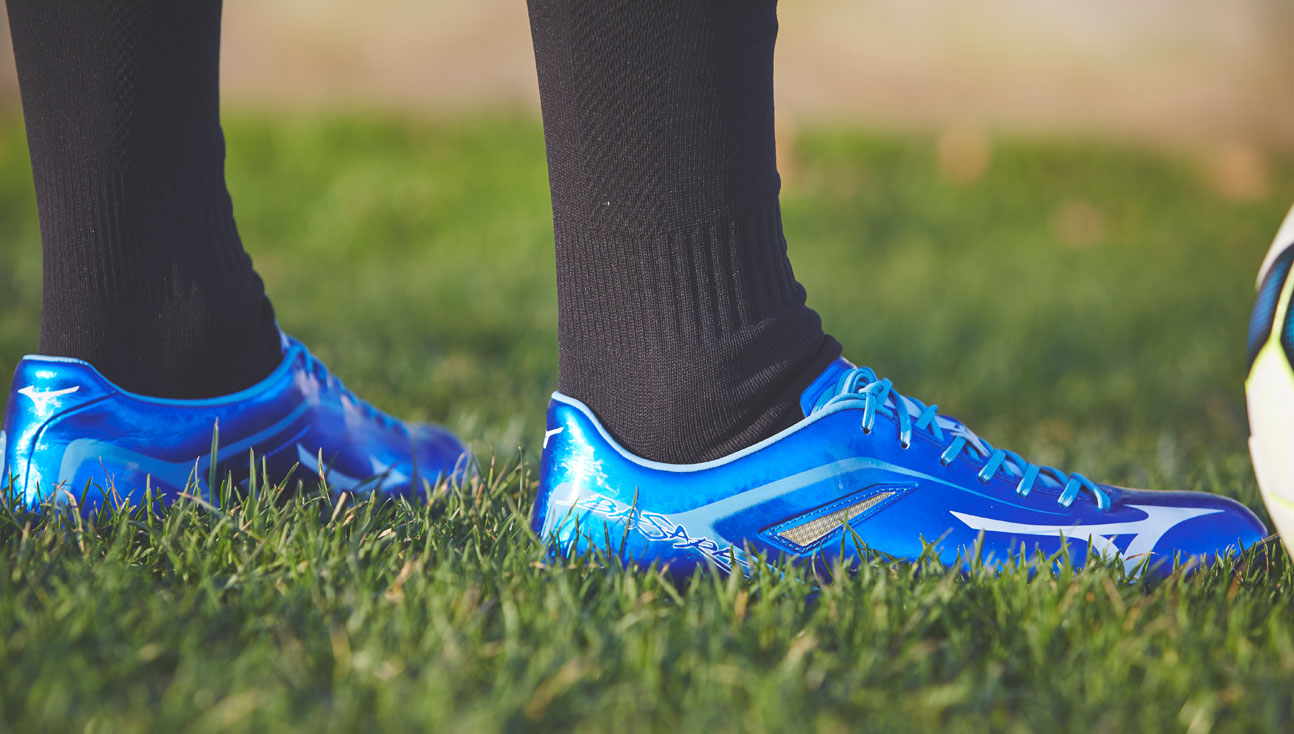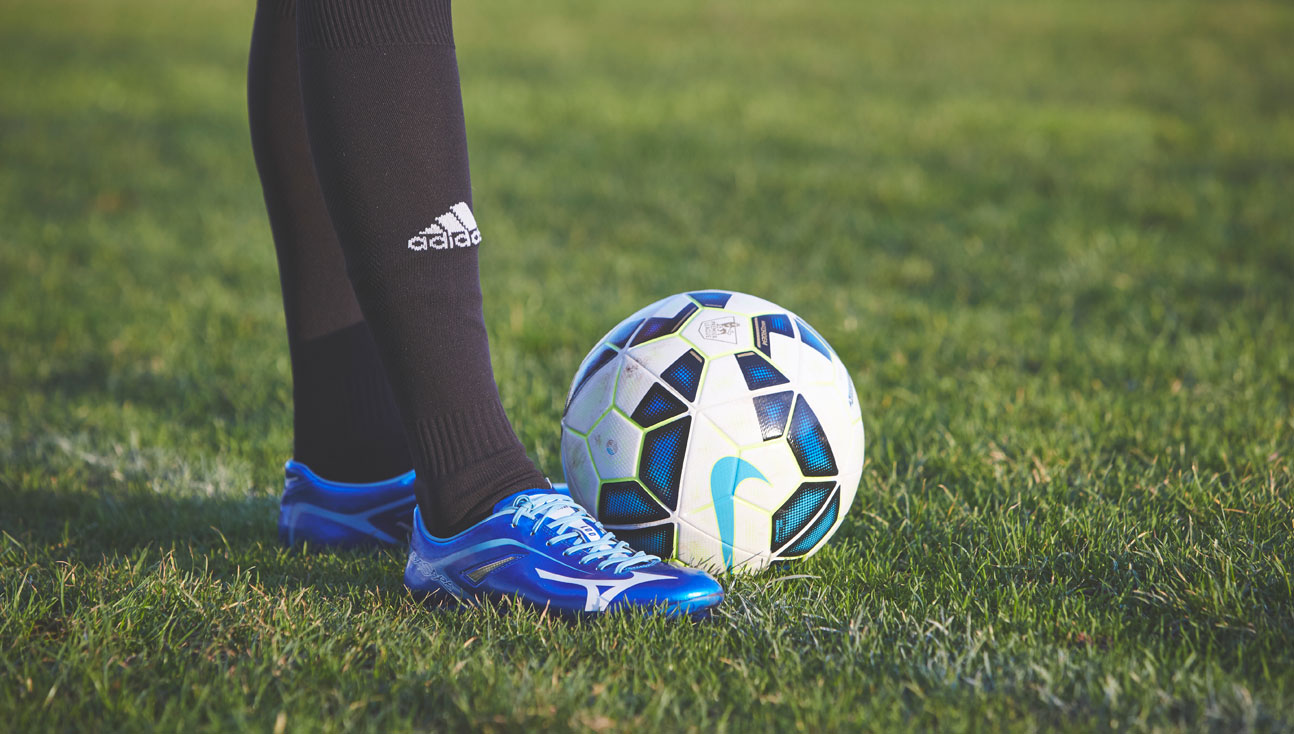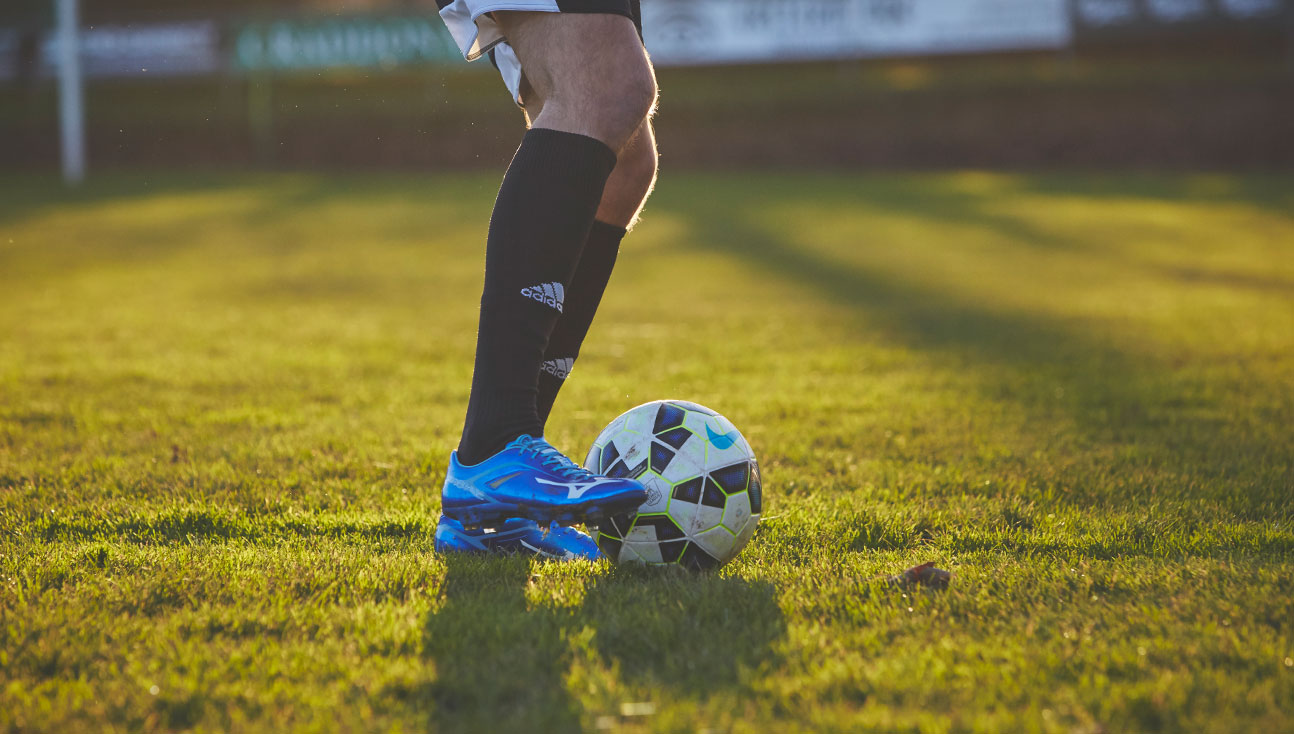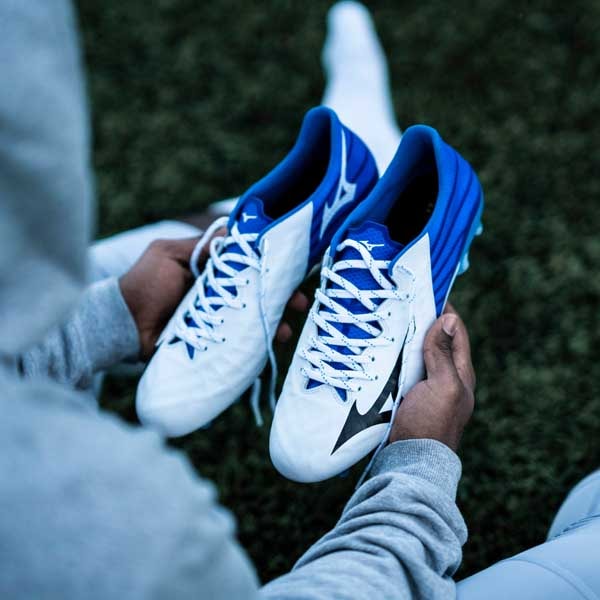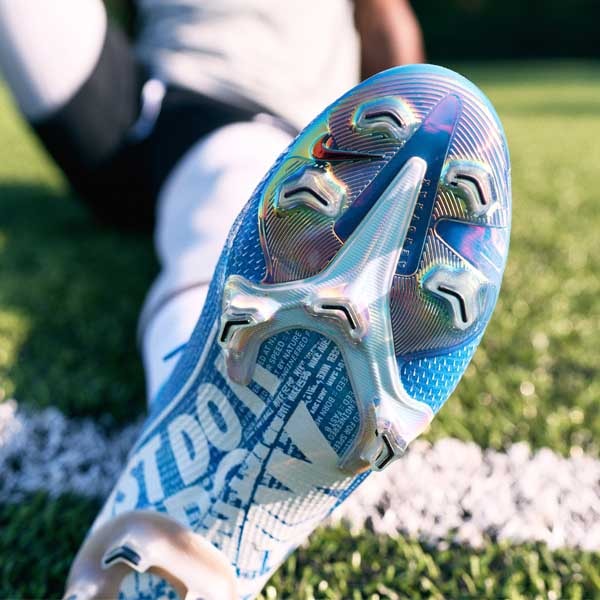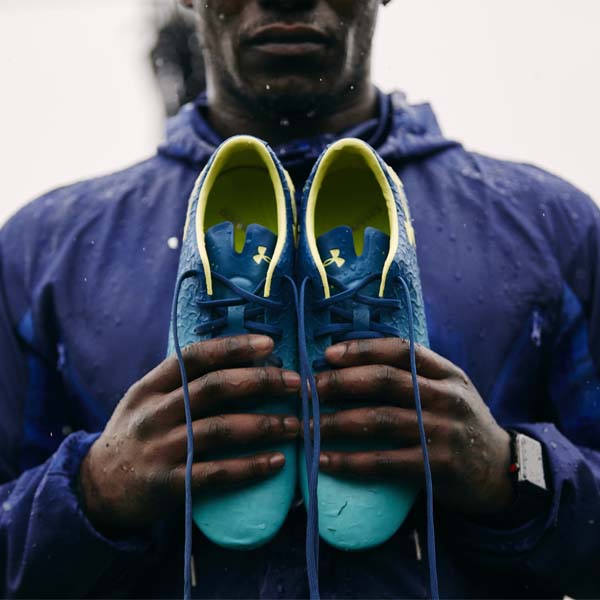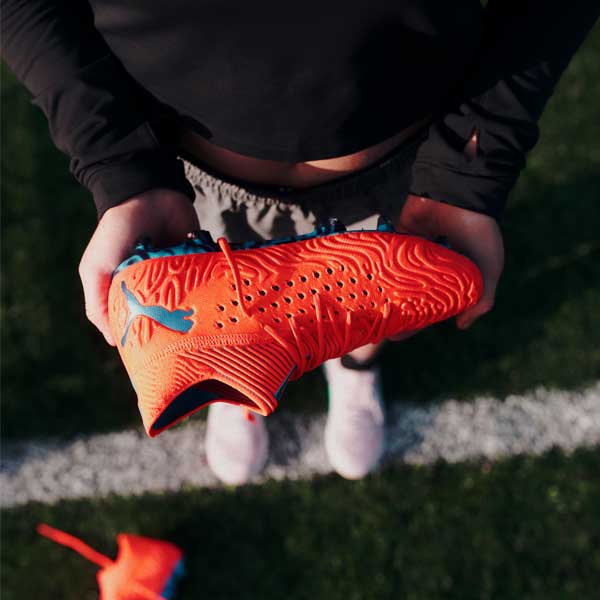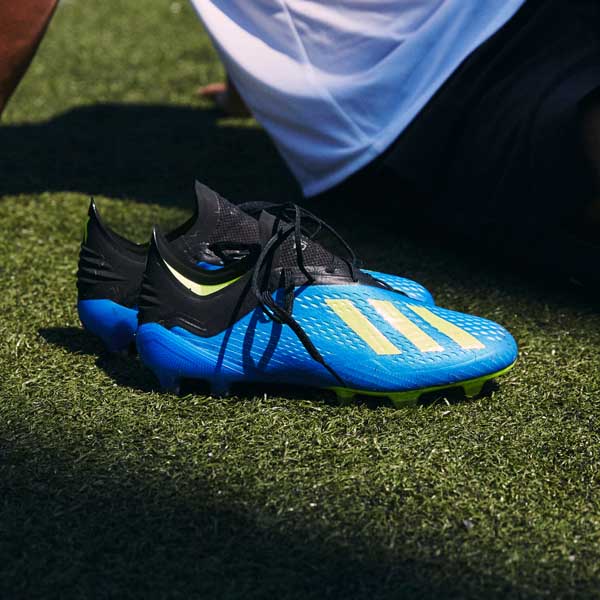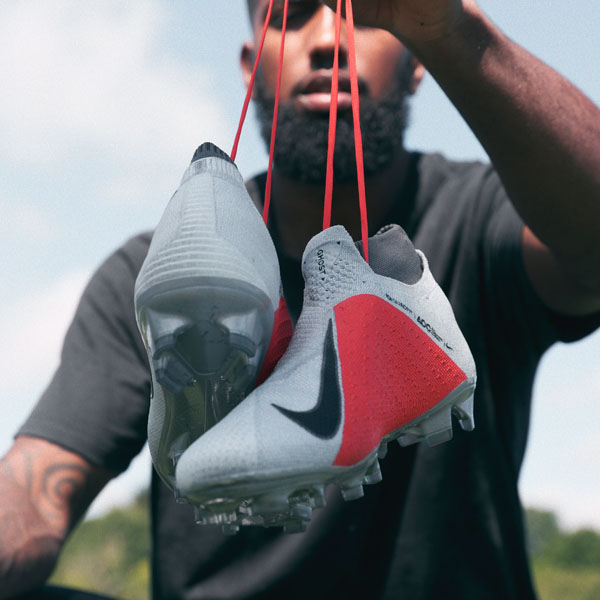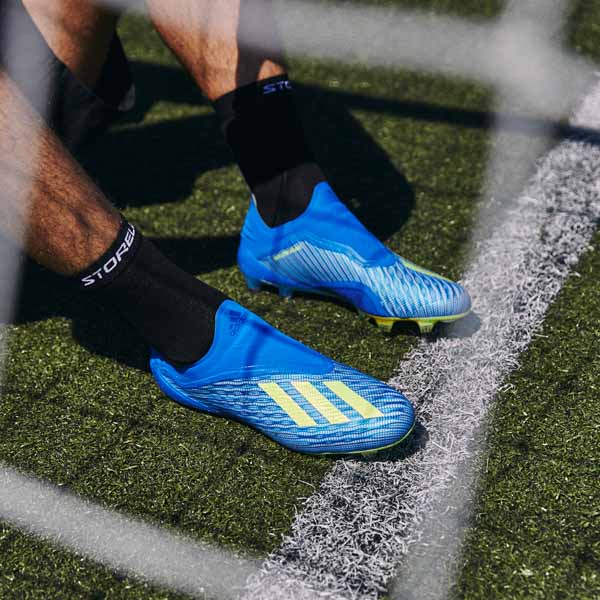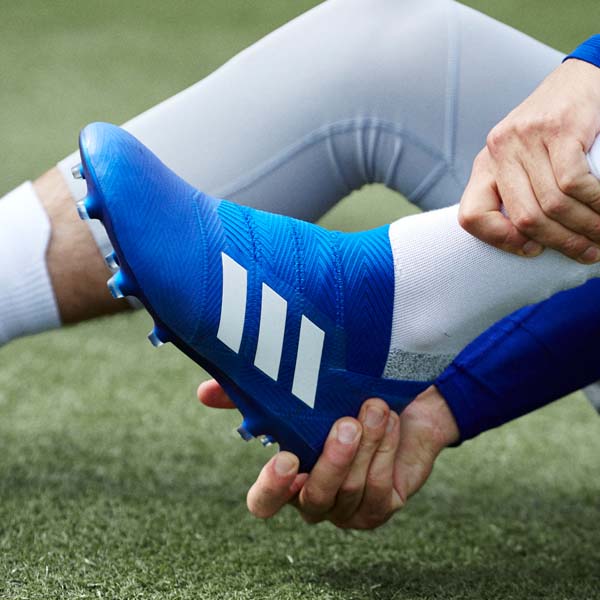One to watch in 2015, the Mizuno Basara 001 has enjoyed a steady introduction to the market since its launch in June 2014. We took Mizuno's lightweight synthetic speed boot out for a spin to see how they stack up against the industry leaders.
In the football industry, speed has become a lethal weapon and within the boot market, companies have looked to facilitate the changing pace of the game. When the topic of speed boots arise in discussion not many can deny who the major players are; adidas, Nike and Puma with their F50, Mercurial and evoSPEED models respectively, are leading the race. However with that being said, a new lightweight challenger from a company who have been closing the gap on football's big-three was released last summer, and it's a boot that might just shake things up.
The “Basara” which is taken from the Japanese for ‘stylish’ or ‘over-the-top,’ is Mizuno’s first attempt at a synthetic ultra-lightweight speed boot and is definitely not one to be over looked by players who rely on speed as part of their performance.
Despite the Mizuno branding, on first inspection the Basara model could quite easily pass for a prototype of an early Mercurial Vapor. You could argue that some of its features, within a design aspect, are commonly found on the Nike Mercurial Vapor range. Nonetheless the Basara is a boot of its own with key technological features that stands it apart from its competitors.
The boot has a general low profile that you would come to expect from a lightweight football boot. The upper, Mizuno’s synthetic material ‘Primeskin,’ which can be found on the Wave Ignitus 3, covers the entire boot and is smooth with a shiny finish. However, where the two boots differ, is the Primeskin found on the Basara is much thinner and also allows for more flexibility adding to its lightweight feel along with delivering a premium barefoot feel.
The Mizuno branding can be found on the lateral side of the boot towards the toe box - a location that would be familiar to Mercurial wearers - the middle of the boot on the medial side, the heel and also on the tongue. The lacing system is central to the boot, with a pinstripe graphic which runs adjacently and stretches back into the heel. There is also additional Basara branding found on the lateral side of the right and left boot.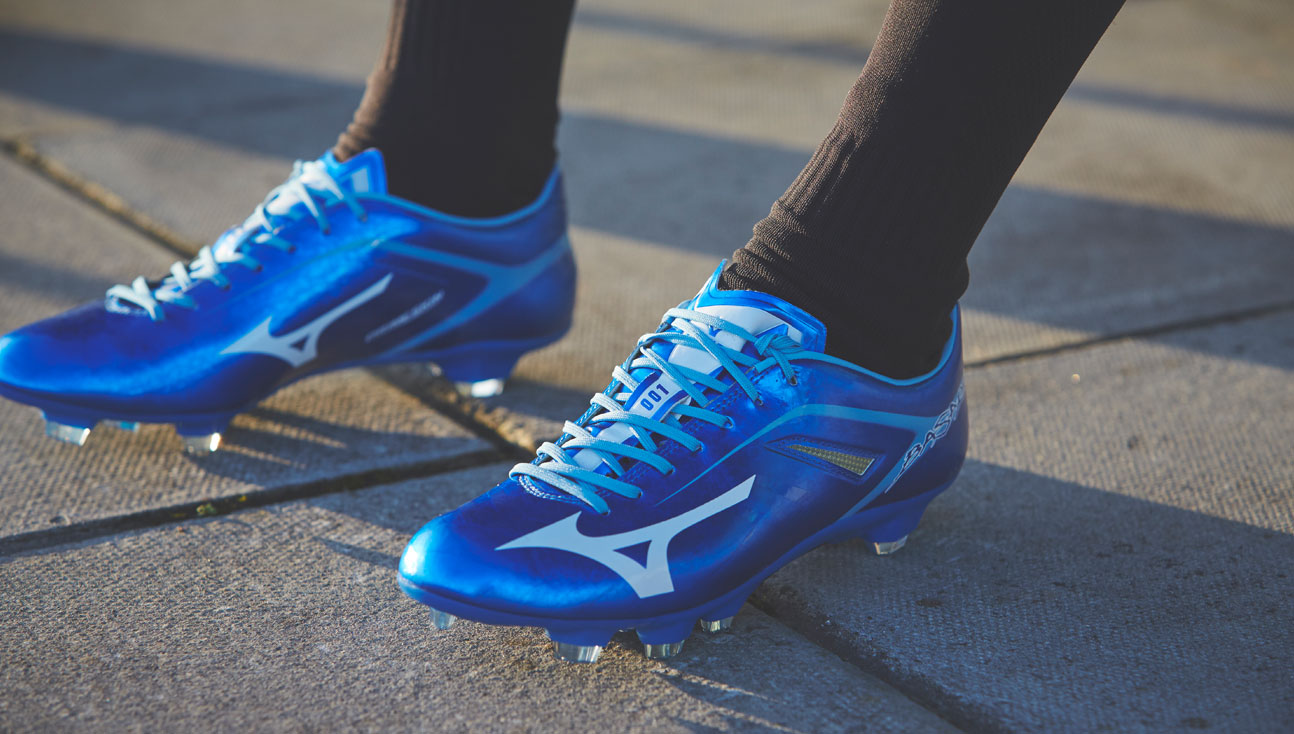
As mentioned previously, the Primeskin found on the Basara gives the boot its lightweight feel along with its flexibility however, what the Basara also has to offer is a level of stability and comfort that is not necessarily common with speed silos. The Basara features a technology that Mizuno have named "R-Fibre Control", which is essentially a support frame for the Primeskin upper. The R-Fibre Control appears to be a woven material which lines ¾ of the upper from the heel to the toe box. The purpose of this feature is to firstly act as a structural base for the Primeskin upper and to also provide the wearer with a sense of stability by preventing the foot from moving around whilst inside the boot. This makes the upper more responsive to movements such as turning and acceleration - a very interesting concept which does not compromise the flexibility of the supple Primeskin upper.
The Mizuno Basara provides the wearer with a padded heel, which isn’t seen too often with speed silos. Though this is a small feature to the boot, it goes a long way in term of the general comfort and playability of the boot. Within some speed boots the heel rubs against the back of the boot and the less padding available the more likely blisters will form.
Moving onto the sole plate which is unique to the Basara, there are two separate pieces of plastic that form the feature. The first, a smaller piece which seems to be a denser material than the rest of the plastic around it, is found towards the back of the soleplate and heel. This piece of plastic is designed to add more stability as well as rigidity to the heel and mid-foot. The second piece of plastic is the larger of the two and covers the majority of the soleplate. What is unique about this feature is its flex grooves which run along the mid-foot. This allows the soleplate to bend in response to the movements of the wearer, so when you are making sharp turns, accelerating or decelerating the soleplate has the technology to move much more naturally with your foot but still maintain good rigidity as far as support is concerned.
The stud pattern of the Basara is also very unique. At the heel there are two studs which are similar to the design you would find on the Vapor VIII or IX and then there’s the fore foot. The stud pattern on the forefoot is something which we haven't seen before. On the medial side of the sole plate there are two studs very far apart from each other; one right underneath where the first toe would be and the second found approximately an inch and a half further down. There are two central support studs and three studs on the lateral side of the boot which aid traction with the ground whilst running in straight lines and making turns.
Though Mizuno are not renowned for making speed boots we were humbly surprised by the Basara. As mentioned previously there are some similarities to the Mercurial Vapor and these boots took us back to when we first played in the Mercurial Vapor III. The Primeskin upper feels great on and really does give that zero-space feel that almost all top speed boots have to offer. Not only that, but the flexibility of the boot allows for a comfortable fit with little to no break-in time at all.
A small mention should be given to the design of the tongue. Mizuno have cut it in order to fit naturally around the leg so there are no irritations whilst playing; a minor detail that makes a big difference. In terms of playability, the Mizuno Basara gives you a close touch to the ball, very much like the barefoot feel you would have playing in the Nike Hypervenom or Mercurial Vapor X. The lightness of the boot is perfect to those who consider themselves to have blistering pace or those who just prefer a lightweight silo with more comfort than other boots.
We found the soleplate responded quite well to the demands of a match day, however if you're going to be using the boots in harsh winter weather, the FG soleplate will not hold up in wetter conditions. The stud configuration is lacking a good balance between responsiveness and traction and, as of yet, we feel that there should either be another stud on the lateral side or the three existing studs should move up towards the toe box or be more spread-out.
Another concern we had with the stud configuration was the placement of the first stud on the medial side of the soleplate. With the stud right under the first toe, it provided a lot of pressure under it and at times felt uncomfortable. This could have been down to the firmness of the pitch we were playing on or it could be a more general manufacturing issue.
Though possibly lacking the innovative prowess of Nike or the design sleekness of adidas, with their first attempt Mizuno have been able to produce a boot which can sit comfortably with its competitors. Weighing in at 175g, the Basara is just slightly heavier than the adizero but marginally lighter than the Mercurial Superfly. Mizuno, perhaps better known for their leather inspired boot ranges, have taken position alongside the fore-mentioned speed demons with a boot that could quite literally give them a run for their money.
Do you wear the Mizuno Basara? Let us know what you think of the boots by dropping us a line below. The Mizuno Basara 001 is available at selected stockists including Pro-Direct Soccer.

